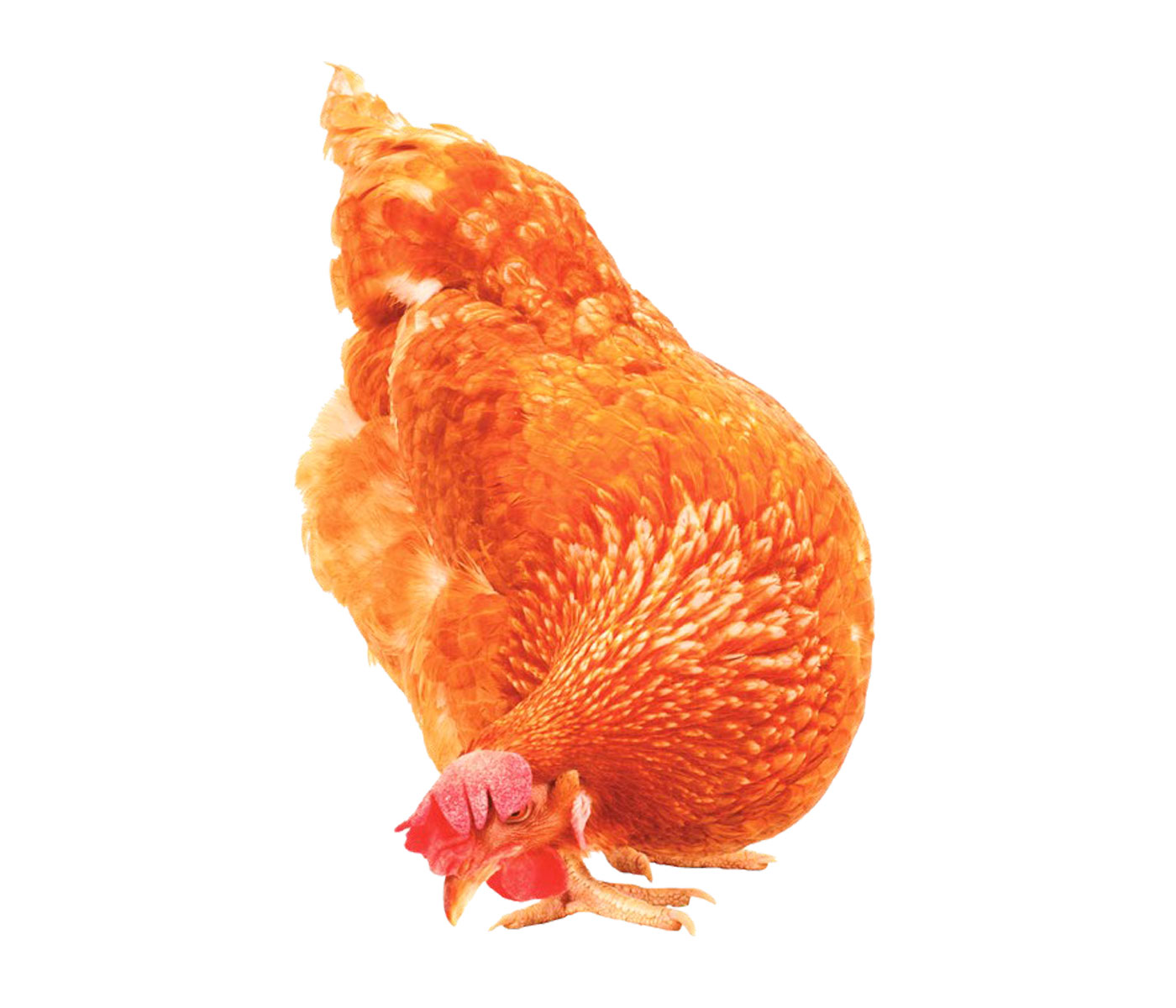Content available at: Indonesia (Indonesian) Melayu (Malay) ไทย (Thai) Tiếng Việt (Vietnamese) Philipino
Antioxidants in Layer Feed
The inclusion of lipid sources in layer diets is a common practice, as they increase energy density, improve feed conversion and the palatability of feed, and also facilitate the absorption and digestion of non-lipid components, as well as being sources of essential fatty acids.
In addition to the functions already mentioned, lipids have unique actions on the body that are only exercised by them, such as:
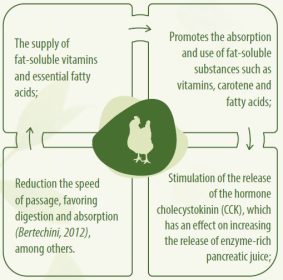
- Most lipid synthesis in poultry takes place in liver tissue. Because lipogenesis occurs almost exclusively in the liver, birds are more predisposed to metabolic disorders such as hepatic lipidosis (Bertechini, 2012).
The addition of oils or fats to the feed as a source of unsaturated fatty acids is essential to obtain adequate nutrition and production from the animals (Nogueira et al.,2014).
In the period before the start of laying, pullets reduce the feed consumption due to stress metabolic production, this fact suggests the need to raise the dietary energy levels so that the bird can accumulate reserves for production.
- Stress affects the physiology of poultry at all stages of rearing, producing metabolic oxidation reactions which, at high levels, impair performance and increase predisposition to disease, since oxidative stress alters the functioning of the immune system (Souza, 2022).
An important caveat that is common to non-ruminants is that the fatty acid profile of the diet directly influences the lipid profile deposited in both the carcass and the eggs.
- Eggs are considered to be one of the most complete foods, because as well as being a natural food and a low-cost source of protein, they also contain fats, vitamins, minerals and are low in calories.
- It is an important reserve of nutrients favorable to health and preventive of diseases, acting in antibacterial, antiviral activities and in the modulation of the immune system (Amaral et al., 2016).
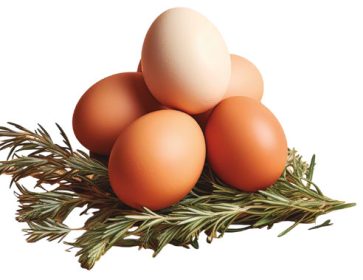
Due to their composition, which is rich in essential fatty acids, eggs are subject to lipid oxidation as soon as they are laid.
- According to Amensour et al., (2010), although oxidative processes are not seen as an obstacle, when ingredients rich in unsaturated fatty acids are added to the diet and, consequently, the production of eggs enriched in these long-chain acids, there may be a greater susceptibility to oxidative deterioration, affecting egg quality and resulting in the production of toxic compounds.
- Oxidation is a mechanism that can occur in plant and animal tissues and also in by-products obtained from them, such as fats and oils.
Catalysts such as light, heat, free radicals, metal ions and pigments induce a complex process called lipid oxidation in the presence of oxygen (Laguerre et al., 2007).
Lipid oxidation during food processing and storage is of great importance. As polyunsaturated lipids oxidize, they form hydroperoxides, which are susceptible to further oxidation or decomposition into secondary reaction products such as short-chain aldehydes, ketones and other oxygenated compounds that can negatively affect the overall quality of the food, including aroma, taste, nutritional value and the production of toxic compounds (Vercellotti et al., 1992).
- Exposure to light, storage conditions, processing, time and temperature of the egg can cause oxidative damage.
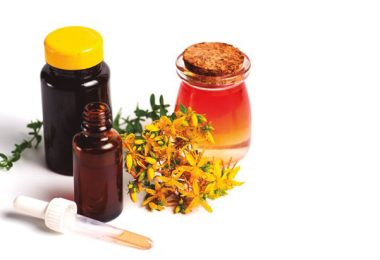
The use of antioxidant compounds found in the diet or even synthetic ones is one of the defense mechanisms against free radicals that can be used in the food, cosmetics and beverage industries, as well as in medicine, and medicines themselves often increase the intracellular generation of these radicals (Doroshow, 1983; Halliwell et al., 1995; Weijl et al., 1997).
- Today’s market wants to ensure the reliability of the products generated by food production chains of animal origin through international certifications and regulations that even consider animal welfare as a policy of responsibility for food quality and safety.
In view of the above, there has been progress in research aimed at including viable alternative products in the diet of layers, such as plant extracts (Fukayama et al., 2005) and vitamins that have been shown to have antimicrobial and antioxidant effects and promote improvements in animal performance and immune response (Brugalli, 2003).
- Minerals such as selenium, copper, zinc, manganese and iron, as well as vitamins such as C, E and A, carotenoids such as beta-carotene, lycopene and lutein, and tannins such as catechins, are notable for their role in defending against oxidation (Halliwell & Gutterdge, 1999).
- Compounds found in plant cells, such as lycopene, xanthine, betacarotene, lutein, cryptoxanthin, zeaxanthin and astaxanthin, which are precursors of vitamin A, are also antioxidants, as they can oxidize oxygen radicals, which is essential for neutralizing these harmful molecules (Valduga, 2009).
Phenolic substances are products of plant secondary metabolism and can be found in plant tissues, both free and bound to sugars and proteins. These substances have antioxidant properties, as they act as oxidation-reduction agents, contributing to the neutralization of free radicals in the body (Silva, 2010).
With the aim of improving bird performance and egg quality due to the presence of antioxidant activity, many studies have been carried out on the inclusion of plant compounds in layer feed.
- Radwan et al. (2008) found that the inclusion of oregano, rosemary, thyme or saffron can improve the productive performance of hens, help the oxidative stability of eggs and reduce the oxidation of yolk lipids during storage.
- Özeku et al. (2011) reported a significant improvement in albumen height and Haugh unit values in eggs from layers fed a mixture of oregano, laurel, sage, myrtle, fennel and citrus essential oils.
- Zhao et al. (2011) concluded that adding ginger powder to layer feed increased the mass of eggs produced and lipid stability of the feed and eggs during storage.
- Freitas et al., (2013) found that the addition of synthetic antioxidants or mango ethanolic extracts improved the quality of the albumen and the lipid stability of the eggs.
- Papadoupoulou et al. (2017) observed that the inclusion of polyphenols contained in olives in the diet via drinking water of laying hens helps to reduce the damage induced by oxidative stress.
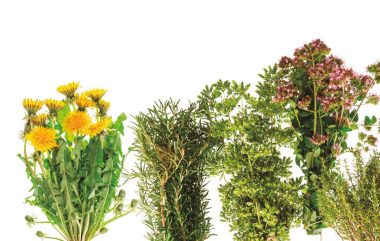
Supplementation with tea polyphenols (600 mg/kg) partially alleviates the adverse effects, which were reflected by increasing the activity of antioxidant enzymes, up-regulating the expression of antioxidant-related genes in laying hens and increasing free amino acids in the egg yolk, according to studies by Zhou et al., (2021).
- Other compounds, such as passion fruit seed oil, which is rich in tocopherols, phytosterols, carotenoids and phenolic compounds, and is known to protect the body against the action of oxidants, have had their antioxidant action investigated (Da Silva & Jorge, 2017).
- Plant extracts and essential oils have long been used in human medicine and, more recently, have been exploited in animal production.
The use of phytogenic feed additives or herbal plants has recently received much more attention as alternatives to traditional antibiotics, probiotics and prebiotics and will certainly be a healthy alternative for quality poultry production in the near future.

